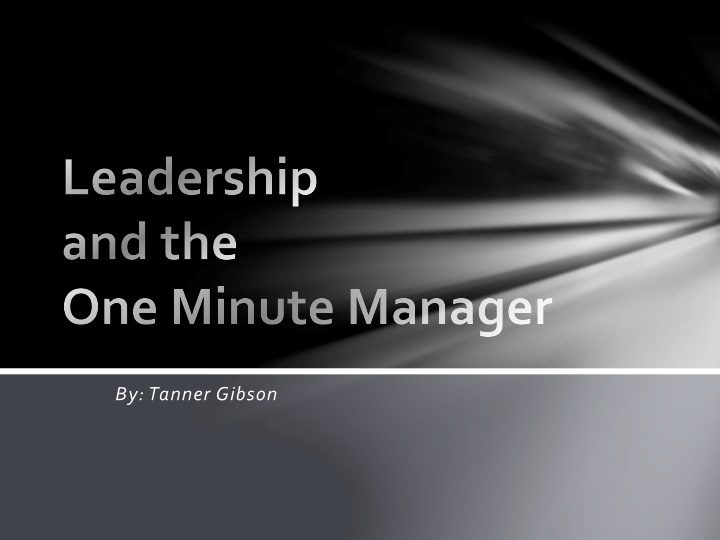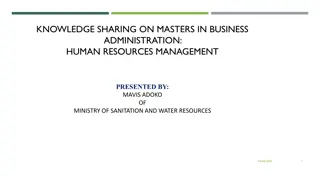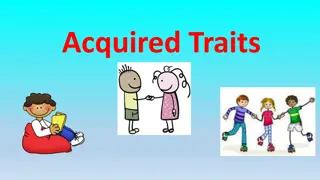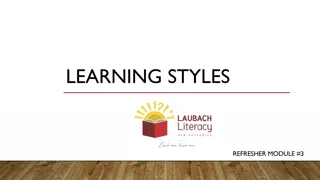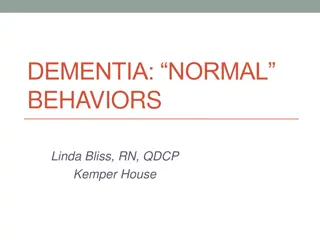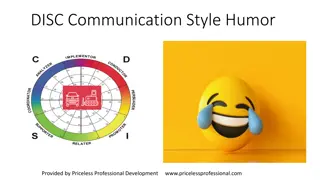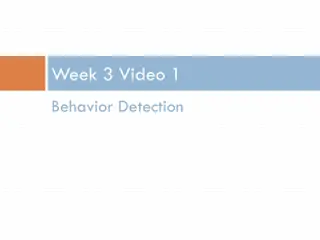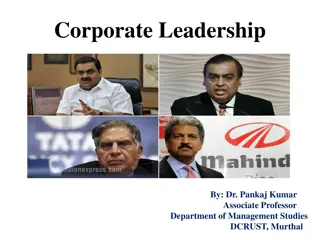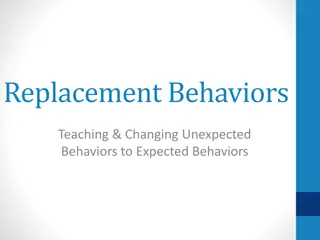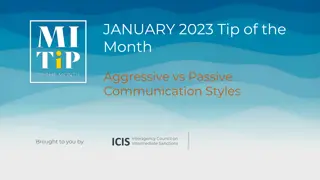Leadership Styles and Behaviors in "Leadership and the One Minute Manager
"Leadership and the One Minute Manager" by Tanner Gibson explores different leadership styles ranging from directive to supportive behaviors, with examples like directing, coaching, supporting, and delegating. The book outlines how appropriate leadership styles can be applied based on individual competence and readiness levels of team members.
Download Presentation

Please find below an Image/Link to download the presentation.
The content on the website is provided AS IS for your information and personal use only. It may not be sold, licensed, or shared on other websites without obtaining consent from the author.If you encounter any issues during the download, it is possible that the publisher has removed the file from their server.
You are allowed to download the files provided on this website for personal or commercial use, subject to the condition that they are used lawfully. All files are the property of their respective owners.
The content on the website is provided AS IS for your information and personal use only. It may not be sold, licensed, or shared on other websites without obtaining consent from the author.
E N D
Presentation Transcript
Leadership and the One Minute Manager By: Tanner Gibson
About Ken Blanchard Born on May 6, 1939 in Orange, New Jersey Degrees: BA in government and philosophy MA in sociology and counseling PhD in education administration and leadership He also writes all of the One Minute Manager books
Directive Behavior Involves: Clearly telling people what to do How to do it When to do it Then, closely monitoring their performance
Supportive Behavior Involves: Listening to people Providing support and encouragement for their efforts Then, facilitating their involvement in problem- solving and decision-making
Leadership Style 1 Directing The leader provides specific direction and closely monitors task accomplishment Best for people who are enthusiastic beginners High directive and low supportive behavior
Leadership Style 2 Coaching The leader continues to direct and closely monitor task accomplishment, but also explains decisions, solicits suggestions, and supports progress Best for disillusioned learners High directive and high supportive behavior
Leadership Style 3 Supporting The leader facilitates and supports people s efforts toward task accomplishment and shares responsibility for decision-making with them Best for experienced and competent people who are sometimes reluctant or cautious contributors High supportive and low directive behavior
Leadership Style 4 Delegating The leader turns over responsibility for decision- making and problem-solving to people Best for people who are self-reliant achievers Low supportive and low directive behavior
Competence One of the two factors that determine a person s performance or achievement Competence is a function of knowledge and skills Gained from education, training, and/or experience
Commitment The other of the two factors that determine a person s performance or achievement Commitment is a combination of confidence and motivation Confidence is a measure of a person s self assuredness Motivation is a person s interest and enthusiasm for doing a task well
Development Levels D1 Low competence and high commitment They need direction and frequent feedback to get them started D2 Some to low competence and low commitment They need direction and feedback They also need support and praise to build their self esteem
Development Levels cont. D3 Moderate to high competence and variable commitment They do not need much direction but they do need support to get their confidence and motivation D4 High competence and high commitment They are able and willing to do projects alone
Shows relation between leadership style and development level
In ORGB The ORGB textbook actually uses Ken Blanchard s Situational Leadership model
Summary There are two different leadership behaviors: directive and supportive There are four leadership styles: directing, coaching, supporting, and delegating There are two factors that determine a person s performance or achievement: competence and commitment
Summary cont. Then, there are four development levels to show their level of competence and commitment
